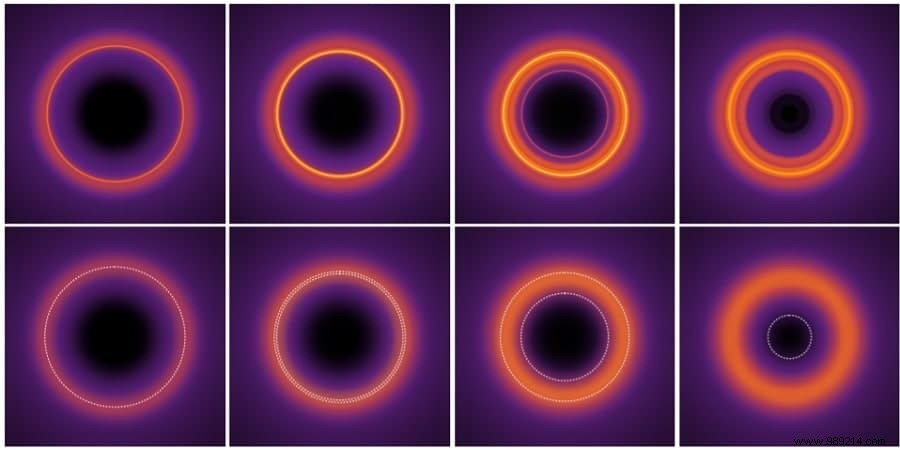In 1975, as part of his work on the thermodynamics of black holes, physicist Stephen Hawking showed the existence of radiation originating near black holes and causing them to evaporate. This led him, in 1976, to expose the paradox of information:according to general relativity, any information absorbed by a black hole is lost irretrievably, thus entering into contradiction with quantum mechanics for which the conservation of information is a Fundamental principle. Several hypotheses have since been put forward to solve this problem. But the solution could come from a better understanding of the black hole event horizon, and in particular the photon sphere.
Over the past few decades, there have been many attempts to resolve the information paradox. Some of these proposals involve extending our knowledge of general relativity. And others involve attempts to unify general relativity with quantum mechanics. So far, however, all attempts to resolve the information paradox have failed.
It is impossible to observe black holes directly, we usually only see them when they interact with their environment (usually absorbing large clumps of gas or dust) or when they merge and release gravitational waves. But that all changed in 2019, when a global network of telescopes known as the Event Horizon Telescope worked together to provide a single image of M87*, a supermassive black hole at the center of the Virgo Galaxy.
This image is striking. The dark void in the center is the shadow cast by the black hole's event horizon, blocking any light behind the black hole from breaking through. And this void is surrounded by a ring of light emitted by the superheated plasma surrounding the black hole. The event horizon of the black hole itself is much smaller than its shadow; the shadow appears so large because of the extreme curvature of space near the black hole.

In some of these theories, it is possible that the photonic sphere is much larger, and therefore much brighter, for distant observers. The different geometry of these photon spheres implies a modified gravity of the event horizon as well as the existence of new coupling functions shaping the configuration of the surrounding spacetime.
By studying these novel physical properties intrinsic to the event horizon and the effect they have on the photonic sphere in more detail, physicists can hope to find in the latter some clues as to how information is processed by the black hole.
Despite this change, the differences in photon spheres between classical relativity and the predictions of these exotic models are still too small to be seen with the Event Horizon Telescope.
But the incredible image obtained by this telescope will not be the last photo we will take of a black hole. Future attempts to study M87* and other supermassive black holes will provide higher resolution images.

If we can solve the photon ring, studying its width and luminosity will give us clues about the nature of the event horizon and ultimately how to solve the information paradox about the photons. black holes.